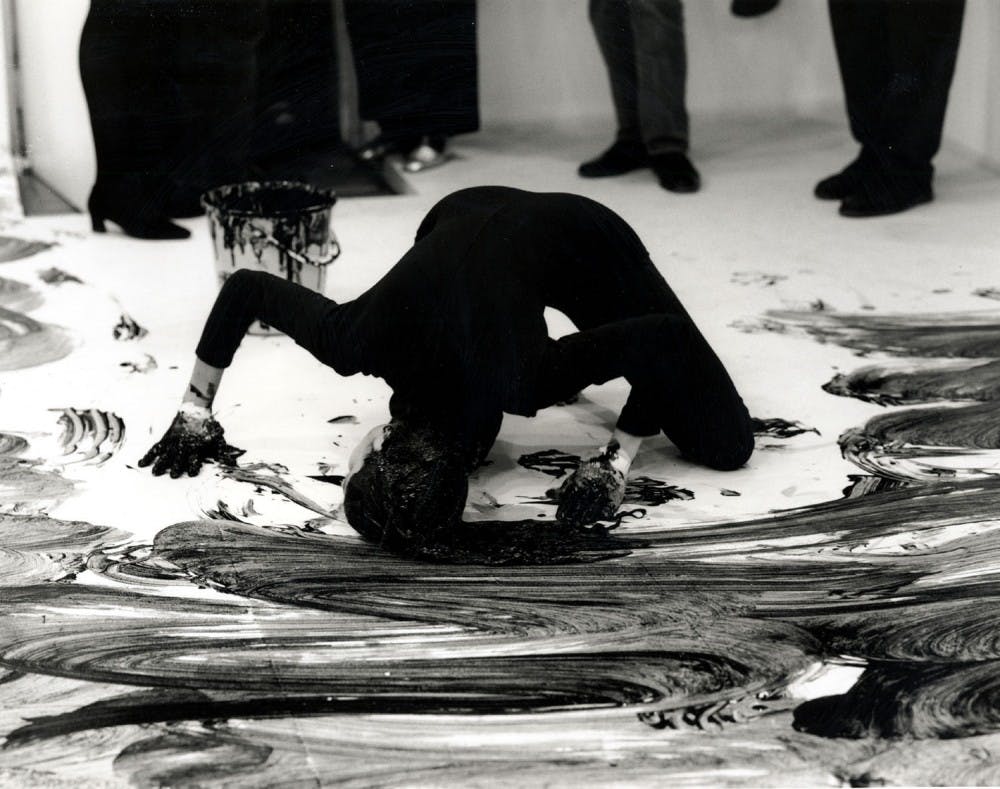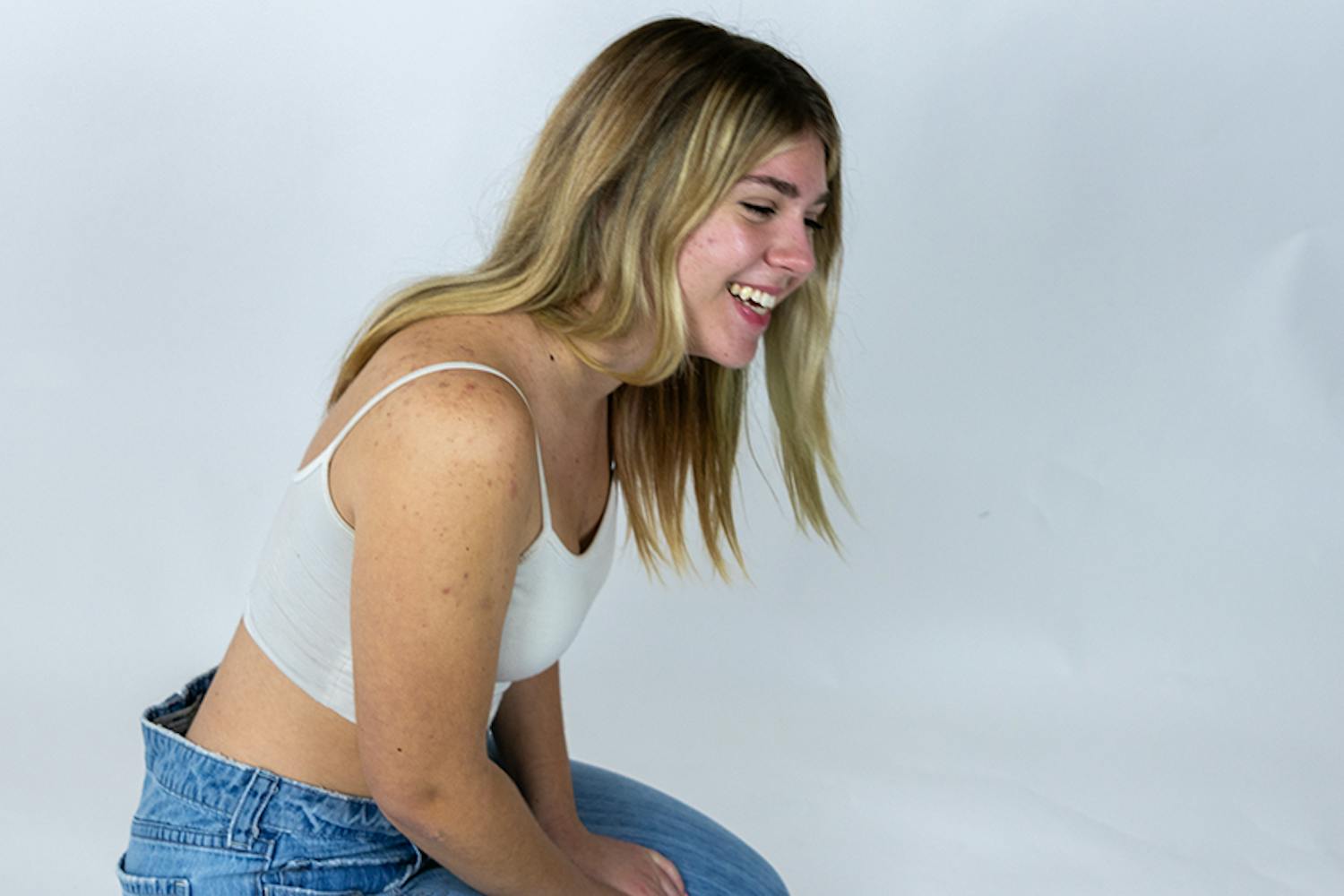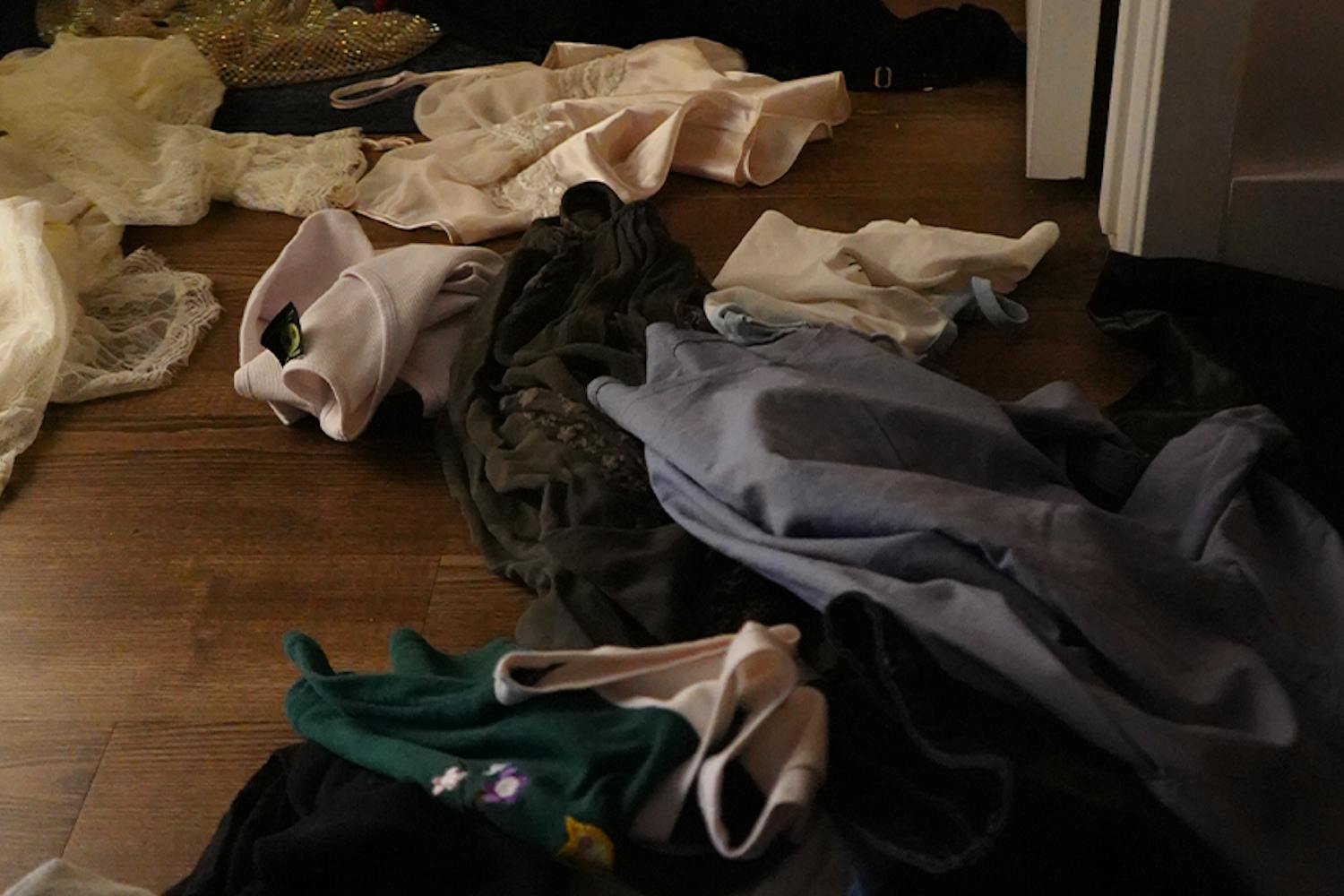An artist who addresses the body, feminism, and chocolate? I would have thought this was too good to be true, but contemporary artist Janine Antoni proved me wrong.
Antoni is most notable for the use of her body as a primary tool for sculpture. Her processes have included chiseling chocolate with her teeth, washing down a life-size soap bust of herself, and recording her brainwave signals during sleep as the pattern to weave a blanket the next morning. For her most discussed performance works, Loving Care, Antoni depicted traditional women’s work by using her hair as a paintbrush to mop hair-dye across a gallery floor on her hands and knees.
So you can imagine I was really excited to hear that Janine Antoni was invited by the ASU Art Museum to speak at the Tempe campus Tuesday night. Before her lecture, I had the opportunity to speak to Antoni about the techniques she uses:
What gave you the idea to use different parts of your body to create art? I was interested in everyday activities and everyday material because I wanted to make an artwork that people could relate to in their lives. I figured that these basic things like chewing and sleeping can engage the viewer. Everyone can fantasize chewing pounds of chocolate. What occurred to me was that biting into a piece of chocolate was sculpting. I didn’t want there to be such a distinction between being a sculptor and being a human. We all have that knowledge in our body and that understanding, and that’s what I’m interested in.
Does having an audience when making art, such as for Loving Care, heighten the process of creating? I would say it was vulnerable to be on my hands and knees for Loving Care, but because I was claiming the space of the gallery, that became empowering. It certainly dramatizes the relationship between the viewer and myself, especially when [the audience] wanted to see it, but they were being mopped out of the room. It created a tension.
What inspired you to make your process of making art into a performance? The reason I’ve done performance art is so that you can replace me with you. It can make it more charged because [it’s] so visceral.
What has been the most challenging aspect in your artistic career? My work really varies from piece to piece in terms of form, and it’s challenging for me to make sure the viewer understand that though the form is changing, the content is staying the same. The themes in my work remain: the body, identity, being a woman, the relationship with my mother. I go after these from very different angles. [It’s challenging] to keep the breadth of my work and to have people not get lost in that. Because I can’t identify with a particular style, that can be confusing to people.
How would you describe your artistic style? I refuse style. I take on whatever form is necessary to communicate the content I am interested in. I purposefully try to stretch the form and attack the same content. I intentionally try to do this, but I realize it’s demanding of the viewer.
What kind of artist would you consider yourself? I would say I really consider myself a sculptor. Whether I am working with photography or performance or video, I am still thinking as a sculptor.





